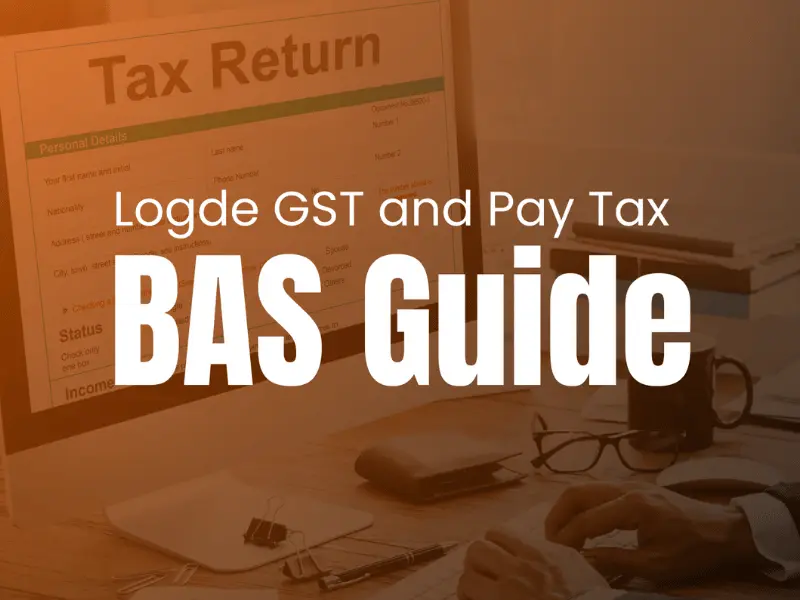BAS Guide: Lodging BAS and Pay Taxes

It’s crucial to stay up-to-date with tax regulations and adhere to the requirements for filing GST returns and paying taxes on liabilities. If you’re looking for ways to make the most out of your tax obligations. Stay with us, and we’ll walk you through how to streamline the process, make it easy, and discuss key dates to help ensure accuracy and compliance.
Everything you need to know about lodging your BAS and paying taxes. Whether you’re a seasoned business owner or launching your first small enterprise, we’ve got you covered!
What is BAS?
Business Activity Statement (BAS) is submitted to the Australian Taxation Office by businesses operating in Australia. It is used by the Australian Taxation Office (ATO) to calculate and collect Goods and Services Tax (GST), Pay as You Go (PAYG) withholdings, and other tax obligations from businesses. The BAS allows you to report your GST revenue, claim eligible input tax credits, and make regular payments for various tax liabilities. Moreover, the BAS keeps your business compliant with tax laws and minimizes the risk of tax penalties.
Before discussing the steps to lodge your BAS, it’s essential to clarify how BAS and GST are connected. In Australia, businesses are required to pay Goods and Services Tax (GST) on their sales, which is then reported using the Business Activity Statement (BAS). Essentially, the BAS is your way of informing the Australian Taxation Office (ATO) about the GST you collected and paid and certain other tax obligations.
Now that you understand the relation between BAS and GST, let’s dive into lodging your BAS!
A Step-by-Step Guide to Lodging Your BAS
Step 1: Register for GST
To get started, ensure that your business is registered for GST. If your business has an annual turnover of $75,000 or more, you are required to register for GST. You can apply online through the Australian Business Register or by contacting your tax agent.
Step 2: Choose the Lodgement Method
Step 3: Obtain Your BAS
The ATO will send your business a pre-printed BAS, which will include reporting labels that are specific to your tax requirements. You can visit the [ATO’s website] to understand complete lodgement details.
Step 4: Gather your financial records
The foundation of lodging an accurate BAS is maintaining well-organized financial records. This includes sales invoices, supplier invoices, bank statements, and any other relevant transaction details. Take some time to review your records and account for all GST-collected amounts (known as output tax) and input tax credits.
Step 5: Complete Your BAS
Based on your records, fill in the relevant information for each label in the BAS, such as GST collected, GST paid, and input tax credits you’re eligible to claim. Make sure to double-check your calculations to avoid errors.
Step 6: Lodge Your BAS
Submit your completed BAS to the ATO using your chosen method (Online, Paper, and Tax Professional). Keep a copy of your lodgment receipt as proof of submission.
Step 7: Make a Payment or Claim a Refund
If your net GST liability (GST collected minus input tax credits) results in a payable amount, you will need to pay this amount by the due date. Alternatively, if you’re eligible for a GST refund, the ATO will process the refund and deposit the amount into your nominated bank account.
Read more about:
What is BAS Due Dates?
Understanding the Business Activity Statement (BAS) due dates is essential for Australian taxpayers. The frequency of lodging a BAS and its corresponding deadline depends on a company’s annual turnover. Here’s a summary:
- Over $20 million annual turnover:
- Lodge: Monthly
- Due date: Within 21 days after the month ends
- Below $20 million annual turnover:
- Lodge: Quarterly
- Due date:
- Q1 (July-September): 28 October
- Q2 (October-December): 28 February
- Q3 (January-March): 28 April
- Q4 (April-June): 28 July
- Under $75,000 annual turnover (or $150,000 for non-profits):
- Lodge: Annually
- Deadline: Submit with income tax return
Understanding Refunds, GST Returns, and Input Tax Credits
When lodging your BAS, you’ll need to report on various tax-related items such as refunds, GST returns, and input tax credits.
GST Refund
In some cases, you may be eligible for a tax refund. This occurs when the total amount of tax credits (such as GST and PAYG credits) is higher than the tax liabilities (such as GST collected and PAYG withheld). To claim a refund, you must ensure that your BAS is filled out correctly, with all the necessary information provided.
GST Return
Lodging a Business Activity Statement requires you to report the GST collected from your customers and the GST credits you can claim. This process of reporting the GST collected and GST credits is also called “filling GST returns.” Ensure accurate records of your sales, purchases, and GST paid to ensure seamless lodgement of your BAS.
Input Tax Credits
Input tax credits are claimed on your GST on business expenses and purchases. To claim input tax credits, you must be registered for GST, have a valid tax invoice for the purchase (if over $82.50), and the purchase must be related to running your business. You can then include these input tax credits when lodging your BAS.
FAQ
Final Verdict
Staying GST compliant and optimizing input tax credits is crucial for Australian businesses. This comprehensive guide emphasizes the importance of adhering to tax obligations, highlighting the significance of timely Business Activity Statement (BAS) filings and meeting eligibility criteria for input tax credits. Efficient management of GST returns can lead to benefits such as improved cash flow, reduced tax liabilities, enhanced transparency, and better business planning. Adherence to tax regulations, record-keeping, and meeting due dates is essential to avoid penalties and maintain financial stability, ultimately contributing to the long-term success and reputation of your business with the Australian Taxation Office (ATO).




